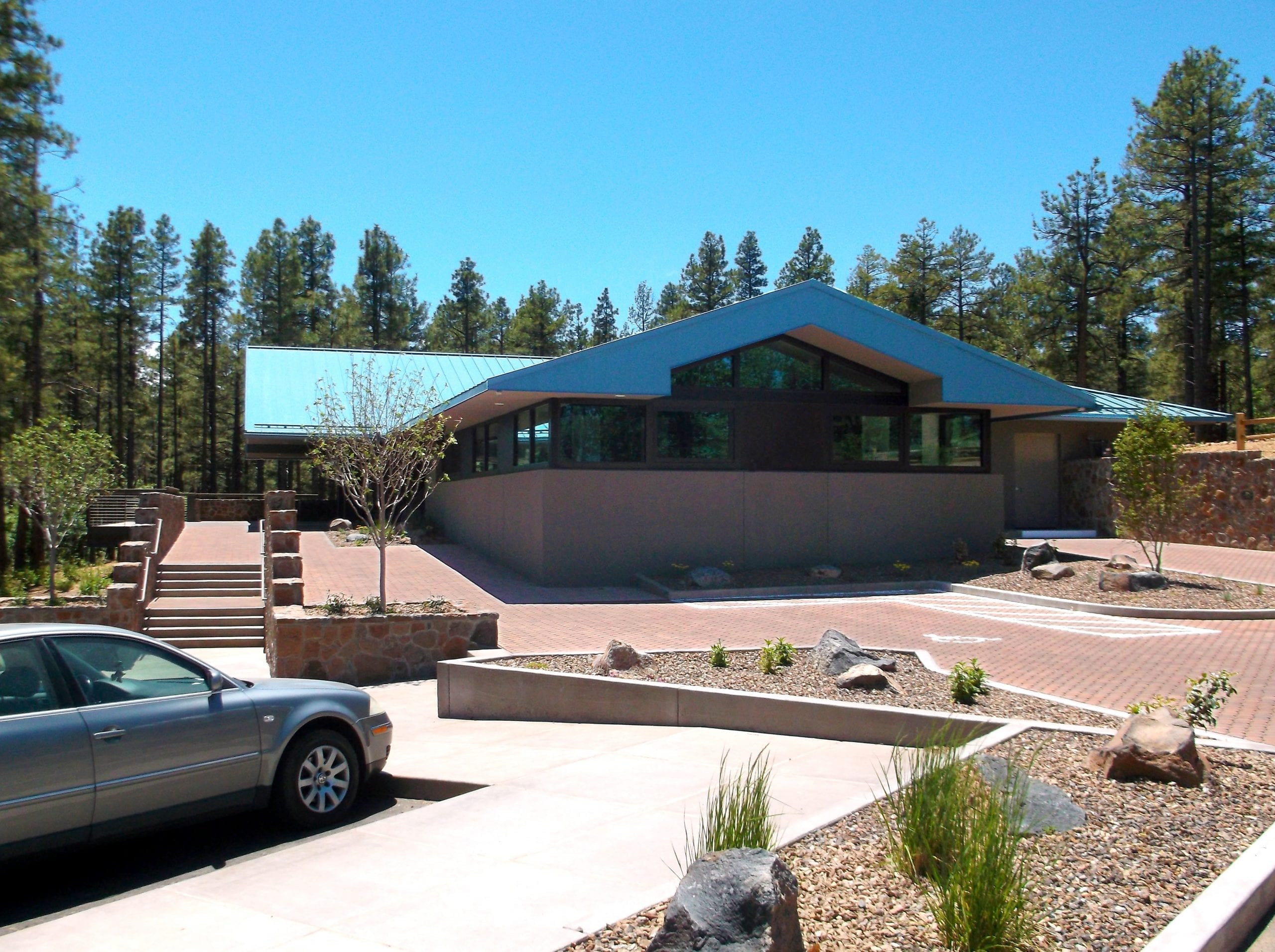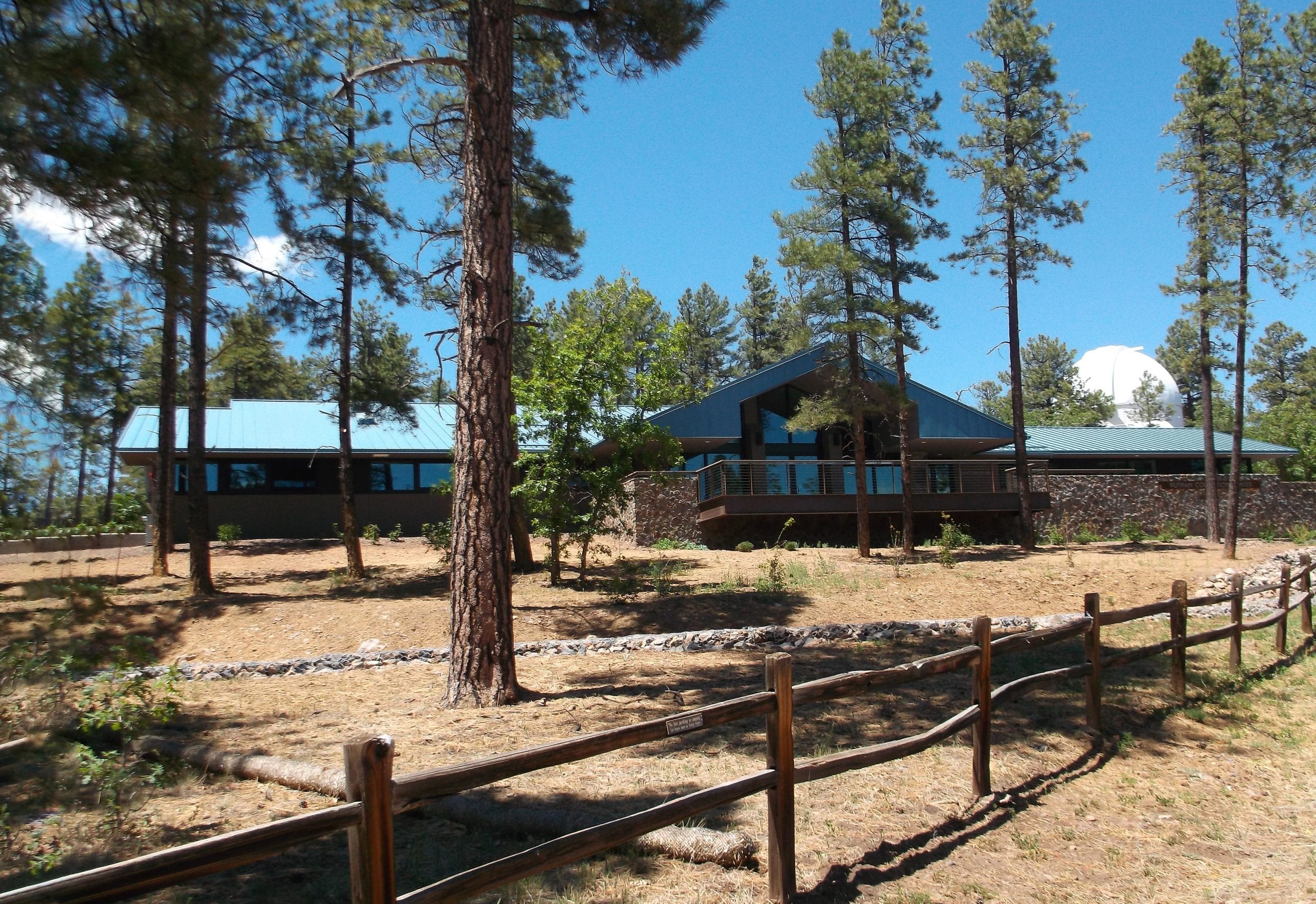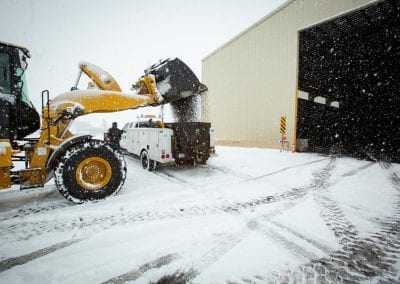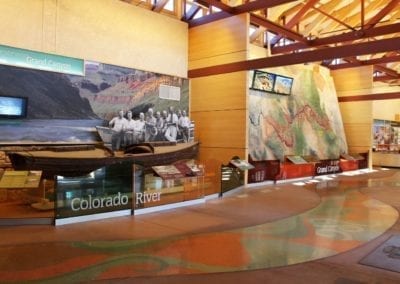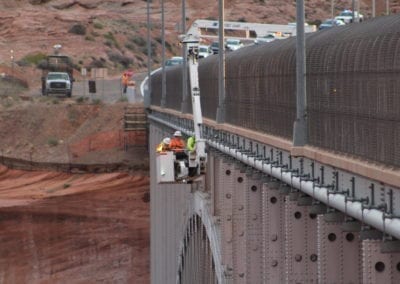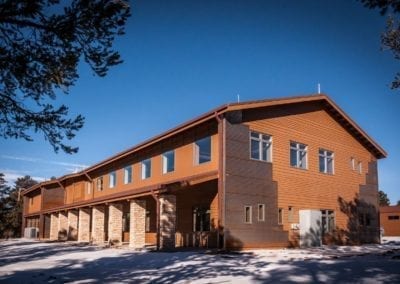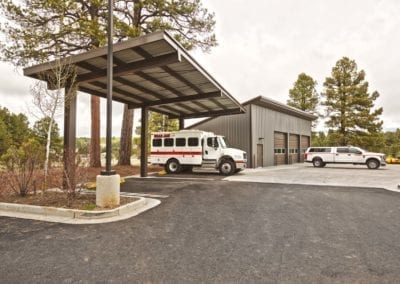WILLIAM LOWELL PUTNAM COLLECTION CENTER AND LIBRARY
The William Lowell Putnam Collection Center and Library located in Flagstaff, Arizona is a new addition to Lowell Observatory’s educational facilities. The Putnam Collection Center and Library serves as a resource center for historian studies and includes a research library, processing room, staff offices, and a collections repository that houses historic photographs, photographic glass plates, an array of antique instruments, artifacts, and an archive of historic papers from across Northern Arizona.
Construction on the library was conducted through both the summer monsoon season and winter months in an environmentally sensitive area surrounded by a dense forest, slopes, and substantial amounts of basalt bedrock. Despite these environmental challenges, the Loven Contracting team delivered construction services on time and without disrupting Lowell’s active observatory campus.
With the Steele Visitor Center, Hendricks Center for Planetary Studies, metal and fabrication shop, and smaller historic observatories located directly adjacent to the new facility, construction was scheduled so that all nearby facilities remained in full operation throughout the duration of the project. Because necessary rock blasting took place adjacent to historic telescope enclosures, buildings, and sensitive equipment, seismic monitors were utilized to verify resulting vibration activity. Blasting was precisely scheduled to avoid disruption to Observatory visitors and surrounding public areas.
Other aspects of the construction job on the collection center and library included:
- A hydronic in-floor heating system was integrated into the temperature and humidity controlled archival center.
- Motorized solar tubes that control lighting and UV in sensitive areas were installed.
- A special walk-in freezer utilized to kill bacteria and insects at temperatures of -20° prior to archiving materials was installed.
- Loven Contracting designed a glycol snowmelt system under a loading dock area with permeable pavers. This system required installation over 2” of rigid foam insulation, yet still had to have the compressive strength to support delivery trucks and general traffic.

